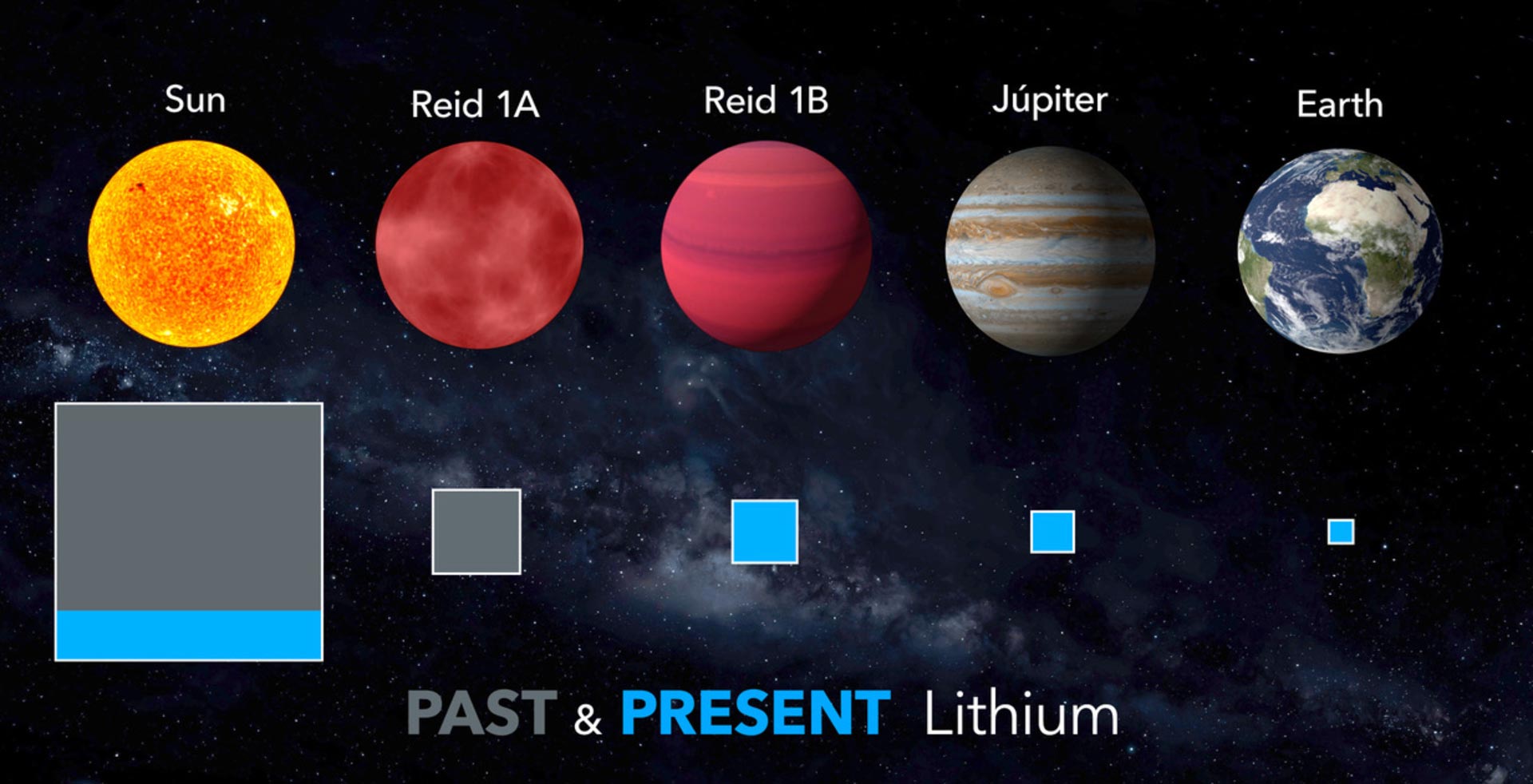
The brown dwarf Reid 1B is a major deposti fo lithium which will never be destroyed.
Planets such as Jupiter and the Earth are even less massive and do not destroy their lithium.
A team of researchers at the Instituto de Astrofísica de Canarias (IAC) and the Instituto Nacional de Astrofísica, Óptica y Electrónica (INAOE), Mexico, has discovered lithium in the oldest and coldest brown dwarf where the presence of this valuable element has been confirmed so far.This substellar object, called Reid 1B, preserves intact the earliest known lithium deposit in our cosmic neighborhood, dating back to a time before the formation of the binary system to which it belongs.
Using the OSIRIS spectrograph on the Gran Telescopio Canarias (GTC, or Grantecan) currently the largest optical and infrared telescope in the world, at the Roque de los Muchachos Observatory (ORM), a team of researchers at the Instituto de Astrofísica de Canarias (IAC) and the Instituto Nacional de Astrofísica, Óptica y Electrónica (INAOE) made high sensitivity spectroscopic observations, between February and August this year, of two binaries whose components are brown dwarfs.They did not detect lithium in three of them, but they did find it in Reid 1B, the faintest and coolest of the four.Doing this they made a remarkable discovery, a deposit of cosmic lithium which is not destroyed, whose origin dates back before the formation of the system to which Reid 1B belongs.
It is, in fact, the coolest, faintest extrasolar object where lithium has been found, in a quantity 13 thousand times greater than the amount there is on Earth.
Observations of lithium in brown dwarfs allow us to estimate their masses with a degree of accuracy, based on nuclear reactions.“We have been following the trail of lithium in brown dwarfs for three decades,” says Eduardo Lorenzo Martín Guerrero de Escalante, Research Professor of the Higher Council for Scientific Research (CSIC) at the IAC who is the first author of the article, “and finally we have been able to make a precise determination of the boundary in mass between its preservation and its destruction, and compare this with the theoretical predictions.” The researcher adds that “there are thousands of millions of brown dwarfs in the Milky Way.The lithium contained in brown dwarfs is the largest known deposit of this valuable element in our cosmic neighborhood.”.
Carlos del Burgo Díaz co-author of the article, a researcher at the INAOE, a public research center of the Mexican CONACYT, explains that “although primordial lithium was created 13.800 million years ago, together with hydrogen and helium, as a result of the nuclear reactions in the primordial fireball of the Big Bang, now there is as much as four times more lithium in the Universe.” According to this researcher “although this element can be destroyed, it is also created in explosive events such as novae and supernovae, so that brown dwarfs such as Reid 1B can wrap it up and protect it as if it was a chest of hidden treasure.”.The Gran Telescopio Canarias, and the Observatories of the Instituto de Astrofísica de Canarias (IAC) are part of the network of Singular Scientific and Technical Infrastructures (ICTS) of Spain.